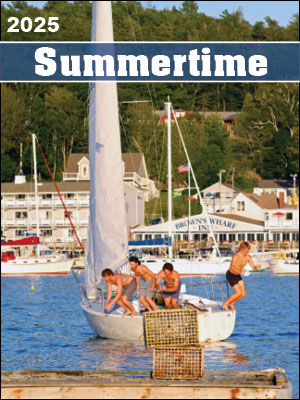BRHS Champions of Change: No lockdown drill
As an upcoming BRHS senior, I walk into school, pass through the halls, and stride into class. I finish my day at school, the only thing on my mind being my next assignment, and my only worry is whether or not I'll turn in my homework on time.Meanwhile, in recent years, all across the country, gun-related crimes have been steadily increasing. The school-shooting topic has always stayed in the back of my mind, but luckily, here at BRHS, we have never dealt with such violent acts.
Tragically, however, other kids across the country have not been so fortunate.
According to the Kaiser Family Foundation (KFF), as of 2024-2025, 51 out of 100,000 kids die each year on average as a result of school shootings across America. Many schools nationwide have implemented security measures for protection if such an attack were to occur. For example, many schools have security cameras and locked entrances. Here at BRHS, we have both. However, one flaw that I’ve identified with our school’s precautions is the infrequency with which we practice “emergency drills.”
“We [have been taught to] lock the doors, we close the blinds, we spread out in the room,” says Mr. Brewer, a Math teacher at BRHS. Barricading the doors is an additional recommendation that could prove time-consuming. If students ‘freeze up’ in the event of an actual emergency, the taught procedures may not be followed.
During our interview, Mr. Brewer added, “I don't think we do enough to talk about it with the students.” And he's correct. As BRHS English teacher Mr. Gorey states “Advisers talked about it with advisees during CORE period this year, but we never actually had a [lockdown] drill.” The CSD “Emergency Evacuations” EBCB policy states “Each school will hold at least one lockdown drill during the school year” is currently not being followed, which is a major issue.
Two years ago, Ariel Alamo, a former BRHS student, wrote in her ‘letter to the editor’ about the same issue I am advocating for, and her letter was met with concern from those who read it, a majority claiming that the school should be focusing on the safety of the kids. She also pointed out the inconsistency that the CSD’s EBCB policy is not being followed, and even though her letter did spark debate and effectively led to a more in depth discussion on the topic, we are still effectively in the same type of situation as before, with little to no effective change. While not having the required lockdown drill, we do watch and discuss an ALICE protocols video..
ALICE is an active shooter response protocol that stands for Alert, Lockdown, Inform, Counter, Evacuate, and works to educate school kids on school shootings. We have watched ALICE videos once a year in the past to educate those who don't know how to react to an active shooter. When finishing the demonstrated videos, advisors and advisees may practice a ‘trial run’, reenacting in person what they did in the videos (ie. barricading our classroom door and shutting off the lights). Even though we do this, it is not effective practice as others may assume it is.
BRHS student Rose Campbell confides, “I’m not sure I would know what to do in case of an emergency. There are many different situations that we haven't fully covered when practicing ALICE,” and this statement is true. Many kids don't know what to do when the time comes to lockdown. Some kids end up in the restroom during a shooting and some end up in the halls. Not everyone is tucked neatly in their respected classrooms during a dangerous event, which is a huge issue when the time comes to lockdown. Out of 73 students who took my survey, 41.1% of students answered that they didn't know/weren't sure of what to do in case of an emergency at school, and 53.4% of students said that they felt unprepared in case of an emergency, even after watching ALICE.
Mr. Brewer states, “The more we talk about it with the kids, the more prepared we become,” which I believe is true. Drills are very important for learning. However, only lecturing kids about these topics can lead to students believing it's not a ‘big deal’, which is refuted by a comment submitted by a respondent to my survey: “I think that practicing those skills would help us more than a lecture about it.” We should not be afraid of drills, as with more practice, the safer we make the environment for the kids at school.
While I understand that practicing drills a few times a year could cause anxiety with the students, I believe we shouldn't shy away from this. If a real threat were to occur at school, students may feel more confident or prepared in their ability to do something. If kids have anxiety around such topics, it should be up to the students to choose whether or not they would like to participate in a drill. Not letting kids have that choice is putting them in unnecessary danger. Overall, 56.2% of the 74 students who answered my survey said they wish we had more lockdown drills at school. The school should be focusing on what our kids need, and what they need is to be safe in case of an emergency.


























